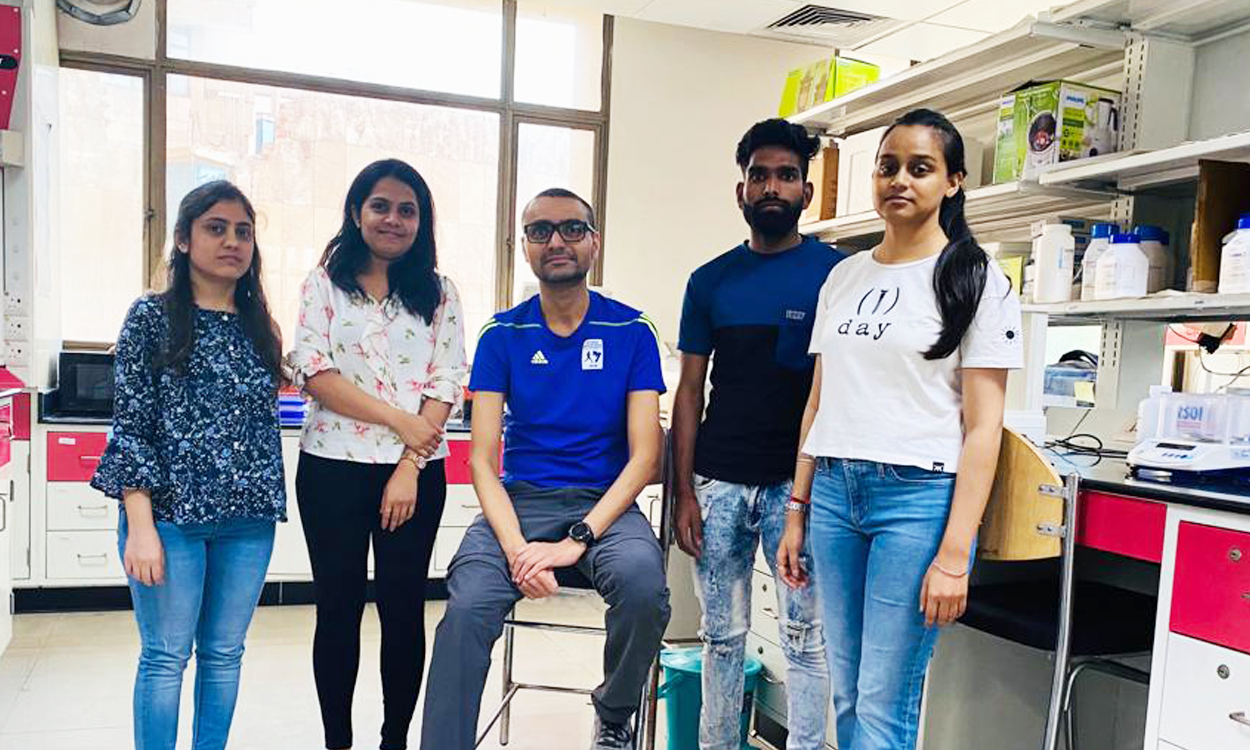
A new study from NIPGR, New Delhi provides the first structural and biochemical characterization of plant SLX1 Endonuclease.
APR 25, 2022 | BY RATNESHWAR THAKUR
Abnormalities in DNA repair and recombination (DRR) pathways among humans are associated with various diseases (e.g., Fanconi anaemia, Xeroderma pigmentosum, Bloom syndrome, etc.), and therefore studying DRR among humans is vital. In the case of plants, an in-depth understanding of the crosstalk between various DRR pathways is equally essential. Such studies will help us understand plants better and, at the same time, would help in improvising the already existing genome editing techniques with better success rates.
In the summer of 2019, Ramalingaswami fellow Dr. Vineet Gaur started a Structural Biology laboratory at the National Institute of Plant Genome Research (NIPGR), New Delhi - focused on DNA repair and recombination in plants. Gaur’s team started working with one of the downstream events involved in Homologous Recombination (a type of genetic recombination that occurs during DNA repair and generation of genetic diversity), i.e., Holliday Junction (HJ) resolution. Holliday Junctions are four-way branched DNA molecules that need to be resolved into two distinct DNA duplexes to preserve the chemical identity of DNA duplexes. An inability to process HJs results in genome toxicity.
One of the pathways in HJ processing among animals involves the coordinated action of two endonucleases: SLX1 and MUS81-EME1. Endonucleases are enzymes that break down a nucleotide chain into two or more shorter chains. SLX1 generates the first and rate-limiting nick, which is immediately followed by a second nick by MUS81-EME1. A non-enzymatic protein, SLX4, coordinates the activities of SLX1 and MUS81-EME1. SLX4 is also required for the activity of SLX1. In the absence of SLX4, SLX1 is inactive.
A plant MUS81-EME1 complex with biochemical properties akin to mammalian MUS81-EME1 complex is known. However, SLX1 and SLX4-like proteins were not known from plants when Dr. Gaur’s team started this project, this prompted them to identify and characterize protein(s) similar to SLX1 and SLX4.
A new study from Gaur’s lab at NIPGR provides the first structural and biochemical characterization of plant SLX1. According to the results published in the journal ‘Nucleic Acids Research’, the study provides insight into the novel regulatory mechanism of the promiscuous catalytic activity of plant SLX1, setting it distinct from the regulation of catalytic activity of mammalian and fungal SLX1.
In this study, based on the amino-acid sequence of the catalytic domain of proteins belonging to the SLX1 family of GIY-YIG endonuclease superfamily, the team identified plant proteins that can possibly act as plant SLX1. One of the identified proteins is At-HIGLE from Arabidopsis thaliana, classified initially as a bifunctional homing endonuclease (also a family of GIY-YIG superfamily).
Further, based on a high-resolution crystal structure of the nuclease domain of At-HIGLE, Gaur’s team unequivocally established At-HIGLE to be a member of the SLX1 family. Next, they checked the catalytic activity of At-HIGLE on a variety of branched DNA molecules, a hallmark of the members of the SLX1 family. At-HIGLE was catalytically active on a wide range of branched DNA substrates: Holliday Junctions, Replication Forks, Flaps, and splayed arm DNA.
Researchers say, the catalytic activity provides two vital observations: (1) Unlike fungal and mammalian SLX1, At-HIGLE (plant SLX1) does not require an accessory protein for its catalytic activity; (2) the activity of At-HIGLE increases several folds on truncating the extended C-terminal region of At-HIGLE. These observations provided clues regarding the self-inhibitory regulatory mechanism involving the extended C-terminal region of At-HIGLE, perhaps explaining the absence of an SLX4-like protein from the plant world.
Besides regulating the catalytic activity of At-HIGLE, the extended C-terminal region is also responsible for the dimeric state of At-HIGLE in the solution. The homodimeric form allows At-HIGLE to resolve HJ by two coordinated nicks by a nick-and-counter-nick mechanism.
“Our study is one step forward in understanding DNA repair and recombination in plants. It opens avenues for further research in the field to decipher cross-talk between various players of homologous recombination,” says Dr. Gaur.
The research team included Prabha Verma, Poonam Kumari, Shreya Negi, Gitanjali Yadav and Vineet Gaur from NIPGR, New Delhi
Journal Reference:
Holliday junction resolution by At-HIGLE: an SLX1 lineage endonuclease from Arabidopsis thaliana with a novel in-built regulatory mechanism
Disclaimer:
To ensure accuracy and scientific relevance, this science blog has been run past the researchers - whose work is covered.
